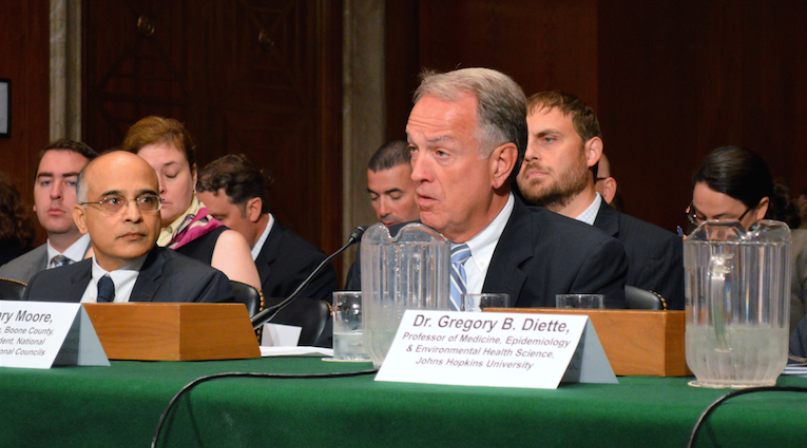Congressional testimony outlines concerns on federal ozone standards proposal
Upcoming Events
Related News

WASHINGTON, D.C. – Speaking on behalf of the National Associations of Regional Councils (NARC) and the National Association of Counties (NACo), Boone County, Ky. Judge/Executive Gary Moore today expressed concerns about the potential impacts of the more stringent ozone standard proposed by the EPA. He explained how regional and local leaders work to balance air quality needs along with measures to promote economic vitality.
“Regional and local leaders,” Moore said, “play a significant role in protecting the air quality while enhancing residents’ quality of life through transportation and economic development efforts. Ozone standards are an important part of protecting the air we breathe, but we need to fully implement and understand the impacts of the 2008 standard before establishing a new one.”
Testifying before the Senate Committee on Environment and Public Works, Moore outlined three key concerns regions and counties have expressed.
- The stakes are high for counties and regions. Counties and other local governments are responsible for more than three-quarters of the nation’s road miles. A more stringent ozone standard would hinder transportation efforts that are critical to economic development.
- A stricter ozone standard would impose unfunded mandates on state and local governments. From the costs of compliance to the costs of delays in critical transportation projects, regions and counties would face direct and indirect costs under the proposed rule, without any additional compliance funding from the federal government.
- The process by which the new standards have been proposed has been confusing and counterproductive. The EPA released the implementation guidelines for the 2008 standard in February 2015. Moore noted that ozone levels are steadily declining as a result of current federal regulatory programs, rendering a new standard premature. Since 1980, ozone-forming emissions have been reduced by half and average ozone concentrations have dropped by a third.
Moore assured the committee that NARC and NACo stand ready to work with Congress and the agencies to craft clear, concise and workable rules. He added that local and regional leaders tasked with implementing ozone standards on the ground are key partners in successful intergovernmental collaboration.
“When we work together, we can achieve our shared goals of protecting air quality, strengthening our transportation systems and promoting economic growth,” Moore said. “We urge the EPA to fully implement the 2008 ozone standard before making any revisions.”
Related News

DOI, DOE and the EPA announce new funding and regulatory measures to support U.S. coal industry
On September 29, the U.S. Departments of the Interior (DOI), Energy (DOE) and the Environmental Protection Agency (EPA) announced coordinated actions to expand domestic coal production and coal-fired energy generation.

U.S. Environmental Protection Agency announces it will uphold 2024 PFAS CERCLA rule
U.S. Environmental Protection Agency announces it will uphold 2024 PFAS CERCLA rule.

DOI announces millions for multiple wetlands conservation programs
On September 18, the U.S. Department of the Interior (DOI) announced $54 million in land acquisitions for waterfowl habitat conservation through a program administered by the Migratory Bird Conservation Commission. The conservation actions add onto an August 4 announcement of $102.9 million in grant-based funding under a separate program administered by the Commission for the conservation of critical wetlands ecosystems and migratory bird habitat through the North American Wetlands Conservation Act.